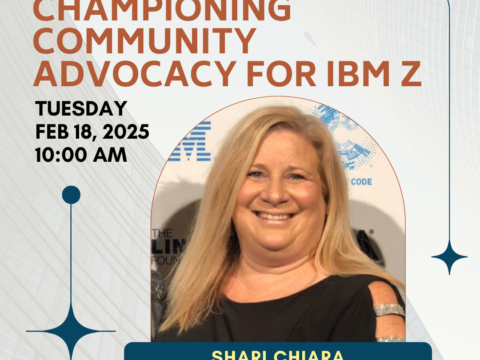Moviri, a multifaceted, Italian based company servicing clients the world over, is presenting several sessions at CMG imPACt 2017, discussing the tools and techniques used in our efforts to deliver actionable intelligence to our customers. From the Multivariate Capacity Management session to Business aligned Capacity Management, to evaluating why average, on average, is a terrible metric.
Come to CMG imPACt 2017 as capacity planners from around the world share their successes, failures, and lessons learned. For our part Moviri is presenting these sessions:
2L6a: Adventures with Charge Back and the Value of a Useful Consistent Lie
2L6b: Capacity Management Chronicles: What I Learned in My First 10 Years as a Global Consultant
2L5c: The Road to Actionable Intelligence is Paved with Minimum, Average, 95th Percentile and Maximum
374: Practical Lessons for Business-Aligned Capacity Management
412: Incorporating Weather Data into Capacity Planning Analysis
432: Multivariate IT Capacity Modeling
=====
2L6a: Adventures with Charge Back and the Value of a Useful Consistent Lie
Mr. Ben Davies from Moviri will discuss the ideas of charge back and why you should start making a charge back, or show back, or shame back, accounting system. It is easy, except for the politics, and you need to just get started as it will take several iterations to come up with the useful consistent lie that is a charge back system.
Ben Davies make dozens of charge back systems while a capacity planner at a large insurance company. the most difficult task was fending off politics and inertia. Traditional business are resistant to change even when everyone accepts that change is needed. Victories were had when the idea of the “useful consistent lie” became accepted and that charge back was nothing to do with finance and everything to do with behavior. These key concepts, along with the basics of charge back are discussed.
We hope that this helps you to make leaps forward in you charge back effort, regardless of the stage you currently find yourself.
=====
2L6b: Capacity Management Chronicles: What I Learned in My First 10 Years as a Global Consultant
Mr. Andrea Vasco from Moviri summarized his most helpful realizations of his first ten years of consulting. This includes a few truisms, as well as check lists of self-assessments. Regardless of your capacity management process maturity an honest assessments is a fundamental step in continued maturity.
This conversation delivers actions you can begin doing immediately, and metrics to help you measure your capacity efforts.
=====
2L5c: The Road to Actionable Intelligence is Paved with Minimum, Average, 95th Percentile and Maximum
Mr. Ben Davies, consultant with Moviri Consulting, is at his most irreverent, discussing why average, on average, is a below average metric. suggesting instead that the road to actionable intelligence is paved with minimum, average, 95th percentile and maximum. Then goes on to show a real world example where shunning the average showed actionable intelligence that saved millions of actual dollars by showing a problem that, on average, did not show itself.
Is 18,000 events averaged to a single point really the metric you wish to base your career on? Well we don’t either, so come to this session to see how above average capacity planners use above average metrics.
======
374: Practical Lessons for Business-Aligned Capacity Management
Ms. Pat Furrow, Sabre Corp and Mr. Andrea Gallo, Moviri Inc. combine to illustrate the path taken to align capacity management with the business. A technical decision of translating mathematical models into actionable intelligence. This is a success story based on multivariate analysis, extrapolation models, through understanding of the business environment and the expert use of the tools and techniques of capacity management.
Showing the use and importance of ‘Little’s Law’ and Queuing Network Models, reveal when services will exceed capacity. Which then allows for accurate capacity models. The resulting analysis and conclusions allow for business aligned capacity management.
This should prove a detailed, technical review of the tools and techniques used to deliver the ultimate goal of a mature capacity process: business aligned capacity management.
====
412: Incorporating Weather Data into Capacity Planning Analysis
Incorporating weather data into capacity planning was a solution to liberate the thinking of non-capacity planners. They did not understand that data that was not strictly capacity planning could be used effectively in a capacity planning context. What better way than to demonstrate with incorporating weather data.
While this did eventually liberate their thinking, as demonstrated by them releasing their ‘non capacity data’ to the capacity team, the efforts to use weather in our capacity plans failed. Mostly because we could not come up with regional business data to compare to regional weather data but still the effort was worth it.
As a somewhat happy accident, some of the observations made during this effort payed off in a big weather event. Surprisingly, the weather event was not considered a weather event, something we did not have good models for, but rather a cultural event, which we did have good models for.
At CMG imPACt 2017 we will present this story. Hopefully, you will find tools, techniques or a mindset that will help you incorporate non capacity data into your capacity efforts. Or at least muse at our epic failures, and our victory.
=====
432: Multivariate IT Capacity Modeling
As with any capacity planning effort there are options. Knowing the systems, reliability and completeness of the data, and ultimate goal these options can be evaluated such that a solid plan can be created.
The holy grail of capacity planning is the ability to forecast one application, out of several, all running on various shared hardware. Moviri shows how this was done in a real world environment, and shows that being able to reliably perform a multivariate model changes the options available to the business. In this example the business avoided large disruption to existing plans by being able to confidently tease out and model an applications performance in a shared environment.



